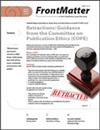Sexual behavior of Metaltella iheringi (Keyserling, 1891) (Araneae: Desidae): sexual patterns, female quiescence and comparisons with other spiders
IF 0.9
3区 农林科学
Q3 ENTOMOLOGY
引用次数: 0
Abstract
Abstract. There are few works on the reproductive behavior of species of cribellate spiders. Even more scarce are studies of the reproductive behavior of representatives of the Desidae, such as the genus Metaltella Mello-Leitão, 1931. In this paper, we describe for the first time the reproductive behavior of Metaltella iheringi (Keyserling, 1891), a species that is characterized by complex genitalia in both sexes. We determined frequencies and durations of the behaviors in the different phases. Thirty virgin males were exposed to virgin females and the behaviors performed by each sex, as well as their frequencies, were recorded. Three phases were identified: pre-copulatory, copulatory, and post-copulatory. The most frequent behaviors were chelicera-palp rubbing, abdomen vibration and web-stretching by the male, and body-shaking and leg-tapping on the web by the female. When the male grabbed the female, she typically fell into a state of quiescence (the female remained motionless with legs in a semi-flexed position) and she remained so even after the male ended the copulation. Mating was characterized by low aggression by the female and a low incidence of cannibalism. In the post-copulatory phase, the male performed frequent behaviors such as abdomen vibration, sperm induction, and post-copulatory cohabitation. We discuss the possible implications of these behaviors in a pre- and post-copulatory sexual selection context. We also provide information that serves as a basis for future studies to understand the mechanisms involved in these behaviors.伊赫林基Metaltella iheringi的性行为(Keyserling,1891)(蜘蛛目:Desidae):性模式、雌性静止以及与其他蜘蛛的比较
摘要关于齿形蜘蛛的繁殖行为的研究很少。更为罕见的是对Desidae代表的繁殖行为的研究,如Metaltella Mello Leitão属,1931年。在本文中,我们首次描述了伊赫林吉Metaltella iheringi(Keyserling,1891)的繁殖行为,这是一个以两性复杂生殖器为特征的物种。我们确定了不同阶段行为的频率和持续时间。30名未成年男性接触未成年女性,记录每个性别的行为及其频率。确定了三个阶段:交配前、交配后和交配后。最常见的行为是雄性的螯须摩擦、腹部振动和伸网,雌性的身体抖动和拍打腿。当雄性抓住雌性时,它通常会进入静止状态(雌性保持静止,双腿处于半弯曲姿势),即使在雄性结束交配后,它也会保持静止状态。交配的特点是雌性攻击性低,吃人的发生率低。在交配后阶段,雄性表现出频繁的行为,如腹部振动、精子诱导和交配后同居。我们讨论了这些行为在性交前和性交后性选择环境中可能产生的影响。我们还提供了信息,作为未来研究的基础,以了解这些行为所涉及的机制。
本文章由计算机程序翻译,如有差异,请以英文原文为准。
求助全文
约1分钟内获得全文
求助全文
来源期刊

Journal of Arachnology
生物-昆虫学
CiteScore
2.20
自引率
10.00%
发文量
34
审稿时长
>12 weeks
期刊介绍:
The Journal of Arachnology publishes scientific articles reporting novel and significant observations and data regarding any aspect of the biology of arachnid groups. Articles must be scientifically rigorous and report substantially new information.
 求助内容:
求助内容: 应助结果提醒方式:
应助结果提醒方式:


